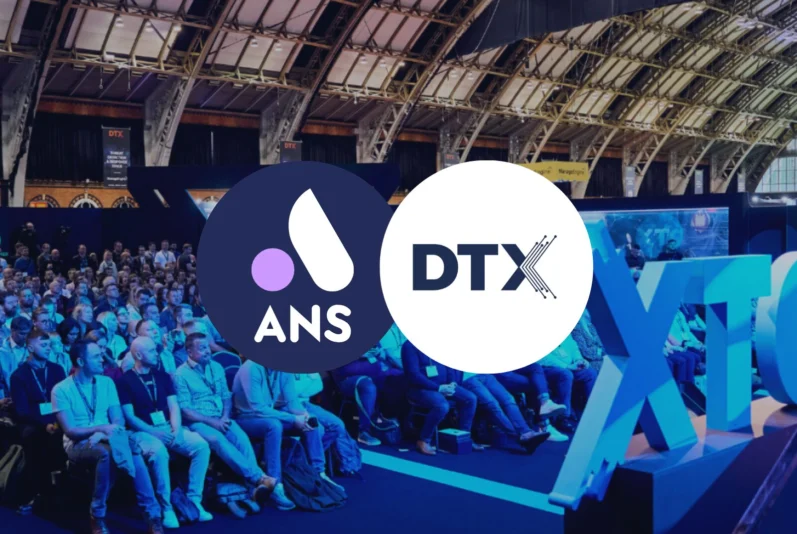Janet Robb, Director of Change Enablement at ANS, shared her invaluable insights on the integration of AI within businesses. Her talk at DTX Manchester put forward the idea that, while mastering the technology side of AI is crucial, it’s the people side of things – the people deciding how and why to implement AI tools, and the employees at all levels of an organisation that need to use them – that can make all the difference.
Having a clear vision
Janet emphasised the importance of having a clear vision for AI, asking, “What is your vision? What are your AI objectives? How has it been communicated? Is it still in the boardroom? How are you going to measure success? Organisations need to have a comprehensive strategy that involves everyone in the company, ensuring that AI initiatives do not remain confined to executive discussions but are communicated effectively to all employees.
The cultural shifts required to embrace AI
Welcoming change involves making people comfortable with AI in their lives. Janet explained that it’s crucial to alleviate fear, demystify jargon, and help people embrace constant change. Successful AI adoption demands a shift in mindset.
Janet explaining that this change must happen at all levels of the organisation. “Everybody has to get involved,” she said, pointing out that successful AI integration requires active participation from everyone, starting from the top with the leadership and filtering down to all employees.
What do we mean when we say ‘AI’?
If you ask five different people to give examples of ‘AI’, you’ll get five different answers. The term AI could refer to a TikTok filter, ChatGPT, a customer experience chatbot, a system for predicting weather patterns, and many other things.
Which means, Janet asserted, that the critical question to answer is: what does AI mean for your organisation? It’s essential for businesses to define what kind of AI they’re talking about, and what it will mean for their operations and their customers in the future.
The importance of communication
Janet reminds us that clear and regular communication is vital for AI integration. “Remember, you need to communicate what is changing, what is not changing, why it is changing, and why now.” Janet emphasised.
People are naturally resistant to change, so organisations must pre-empt this by helping people understand the benefits of AI to their role and addressing common fears and misconceptions about the technology.
Bringing people on the AI journey
These insights underscore the importance of a well-defined vision, good communication, and cultural readiness in embracing AI. As organisations navigate the complexities of AI adoption, they must ensure that everyone is on the same page and equipped to handle the changes ahead.
By fostering a supportive environment and maintaining open lines of communication, businesses can successfully integrate AI into their operations, driving innovation and growth for the future.
To start your AI journey, read our AI Readiness report here





